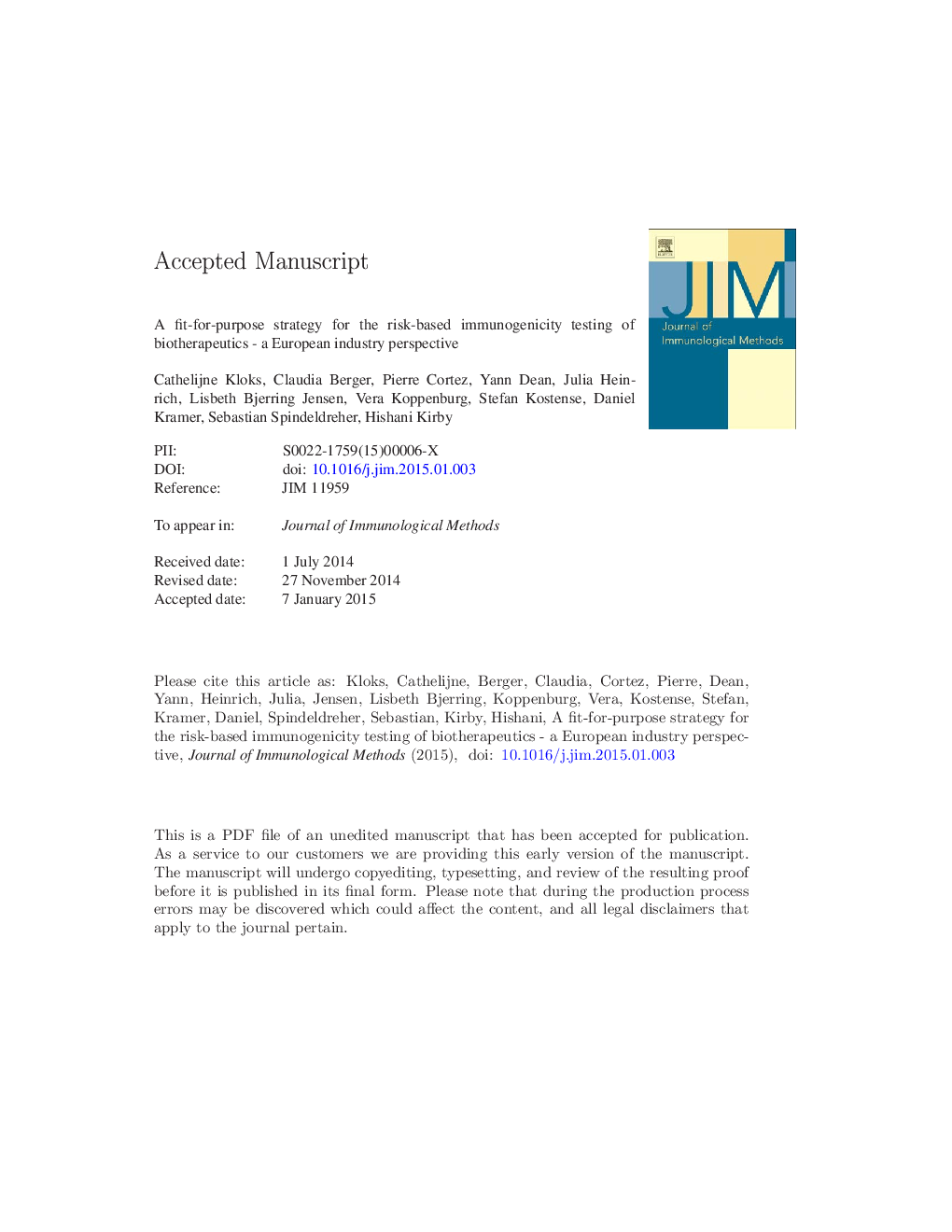| Article ID | Journal | Published Year | Pages | File Type |
|---|---|---|---|---|
| 8417532 | Journal of Immunological Methods | 2015 | 30 Pages |
Abstract
Here, we propose two pre-defined testing strategies for the detection and characterization of anti-drug antibody (ADA) responses where the different strategies are based on the phase of development for a biotherapeutic, a. without (category 1) and b. with (category 2) the expected potential to elicit ADA mediated severe clinical consequences. The harm of a potential ADA response determines which of the two testing strategies is adopted. Rather than replacing the overall risk assessment which is known to be challenging and multi-factorial, the testing strategy selection is a starting point for immunogenicity testing which adapts throughout drug development as more information becomes available. The scientific rationale on which the "case-by-case" approach advocated in white papers and guidance documents may be translated for each individual drug development program is provided and, underpins the recommendations made here.
Keywords
myxovirus resistance protein AmAbCDCADCCMxAMABELToxicokineticCBASAEEIPNOAELFIMCell-based assayanti-drug antibodiesMonoclonal antibodyantibody-dependent cellular cytotoxicityFirst-in-manImmunogenicityCLBBiotherapeuticBiologicalsNeutralizationadverse eventSerious adverse eventpharmacodynamicpharmacokineticcomplement dependent cytotoxicityNo observed adverse effect levelADA
Related Topics
Life Sciences
Biochemistry, Genetics and Molecular Biology
Biotechnology
Authors
Cathelijne Kloks, Claudia Berger, Pierre Cortez, Yann Dean, Julia Heinrich, Lisbeth Bjerring Jensen, Vera Koppenburg, Stefan Kostense, Daniel Kramer, Sebastian Spindeldreher, Hishani Kirby,
